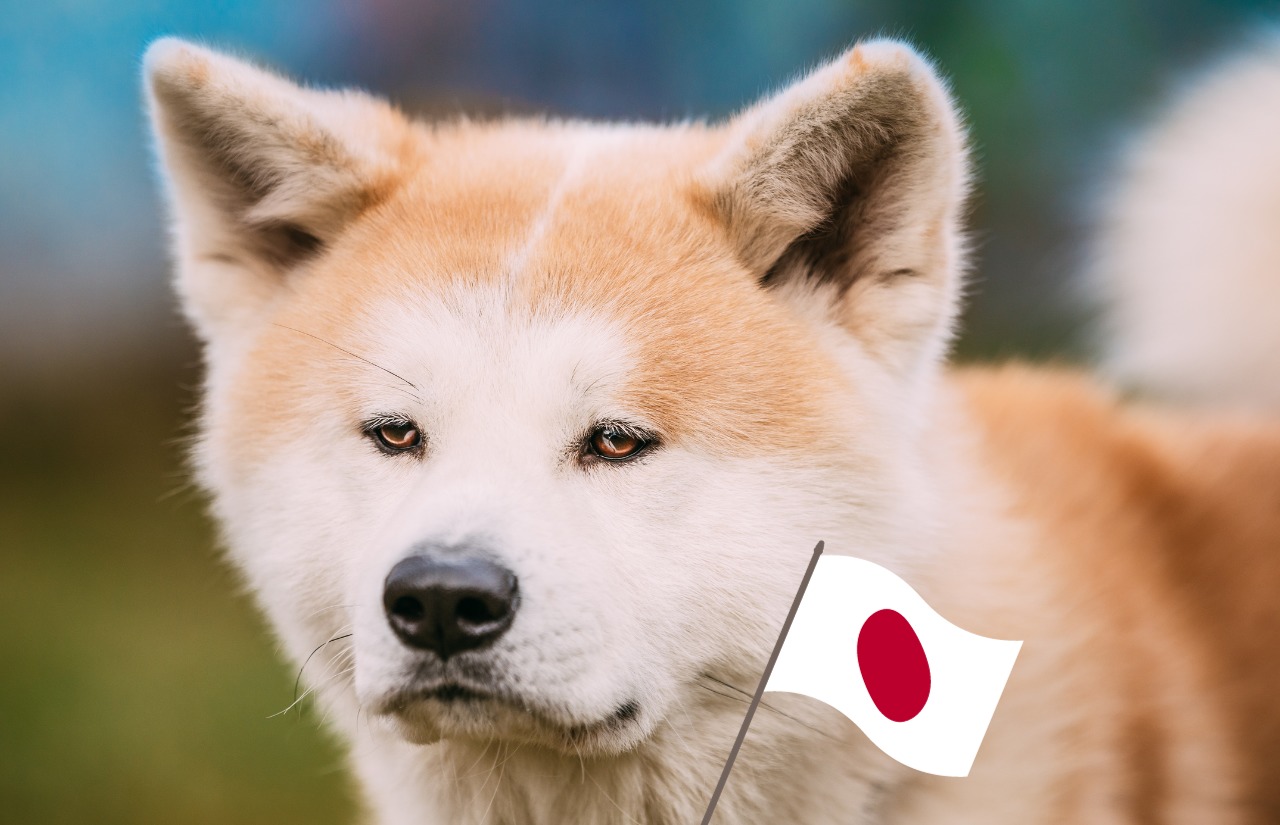Stepping paw-first into the exotic and intriguing world of Japanese canine companions brings us face-to-face with an array of delightful, loyal, and courageous breeds. Each breed originating from the beautiful archipelago of Japan presents a distinct personality, unique traits, and a storied history that enchants dog lovers and enthusiasts globally. Let’s embark on a journey together through the picturesque landscapes of Japan as we explore seven popular dog breeds that have captured hearts worldwide, revealing why these fur-buddies are more than just pets – they’re a cherished part of the family.
Table of Contents
1. Akita Inu: The Loyal Guardian
2. Shiba Inu: Small in Size, Big in Personality
3. Kishu Ken: The Silent Hunter
4. Shikoku: The Agile Adventurer
5. Hokkaido: The Robust Survivor
6. Japanese Chin: The Aristocratic Companion
7. Sanshu Inu: The Harmonious Guardian
Closing Thoughts
Akita Inu: The Loyal Guardian
The Akita Inu, with its plush double coat and fox-like appearance, stands as a symbol of Japan’s resilient and enchanting canine history. This breed, imbued with a compelling blend of majesty and mystery, navigates the world with a dignified posture and a gentle yet firm gaze. The Akita is more than just a dog; it’s a cultural emblem, one that encapsulates loyalty, bravery, and tranquility in its soft, profound eyes.
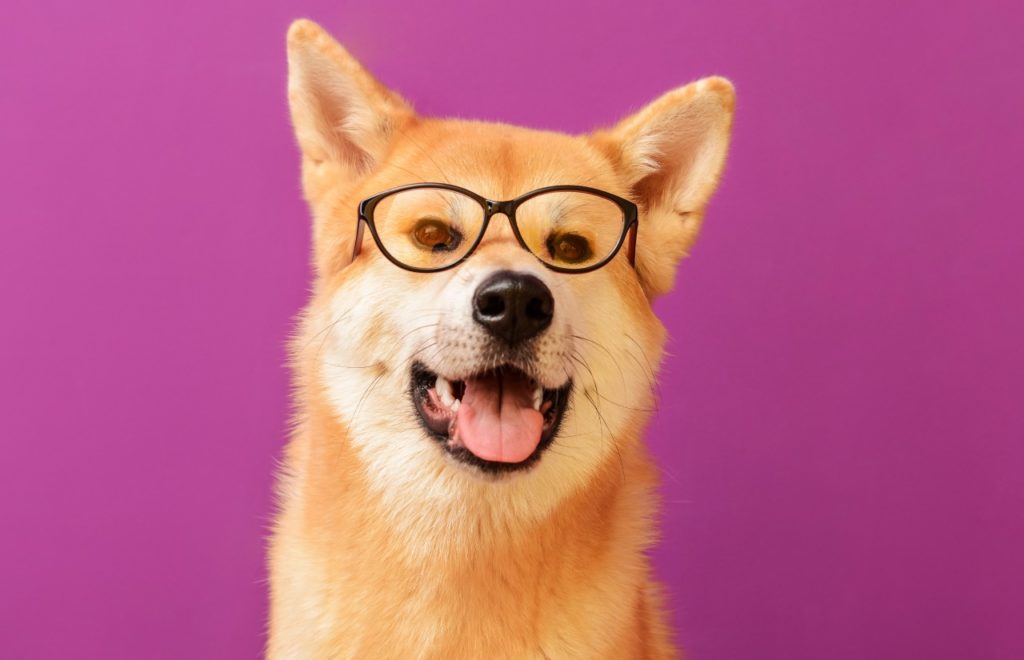
History and Origin
Akita Inu originates from the Akita Prefecture in the northern part of Japan, designed for resilience against the chilly perimeters of the region. Initially bred for hunting large game such as bears, boars, and elks, Akitas are robust and bold, with a poised and composed demeanor. These attributes go hand in paw with an illustrious history, often interwoven with tales of valor and nobility. The story of Hachiko, an Akita who waited faithfully for his deceased owner at a train station for nearly a decade, permeates global dog folklore, symbolizing the breed’s profound loyalty and unwavering spirit.
Temperament and Personality
Enveloped in a thick, handsome coat, the Akita Inu is a paradigm of composed affection and serene loyalty. Despite their gentle demeanor towards their family, they are often reserved, perhaps even aloof, towards strangers. They tend to form an unbreakable bond with their human counterpart, often adopting a protective stance and embodying a guardian spirit. While they radiate calmness and stoic resolve, the Akita is also playful, enjoying lively activities and interactive play sessions with their loved ones.
Training and Socialization
Akita Inus, while incredibly intelligent, possesse a streak of independence, which can sometimes be mistaken for stubbornness. Early socialization and consistent, positive reinforcement-based training is paramount in nurturing their social skills and adaptability. Exposing them to varied environments, people, and other animals during their formative puppy months helps mold their social perspectives and ensures they grow into well-rounded, adaptable adults.
Health and Care
Akitas are generally hearty and robust, with an average lifespan of 10-15 years. However, they are susceptible to certain health conditions, such as hip dysplasia, hypothyroidism, and Progressive Retinal Atrophy (PRA). A well-balanced diet, regular vet check-ups, and ample exercise are crucial in ensuring they lead a healthy, fulfilled life.
Grooming Needs
The plush coat of an Akita Inu is not only a stunning visual feature but also a shedding powerhouse. Their double coat, consisting of a dense undercoat and a shorter outer coat, requires regular brushing to manage shedding and maintain a healthy, vibrant sheen. Akitas are naturally clean and often groom themselves much like cats. However, regular grooming sessions will not only serve to maintain their coat but also provide precious bonding moments between the Akita and their human companion.
In wrapping up our exploration of the Akita Inu, we bask in the silent eloquence and enigmatic aura that this noble breed exudes. Their undying loyalty, gentle temperament, and stalwart guardianship offer a unique, enriching, and profoundly deep companionship to those fortunate enough to share their lives with this remarkable breed.
Our journey through the world of popular Japanese dog breeds continues, moving from the dignified Akita Inu to explore the vibrant, spirited charm of the Shiba Inu.
Shiba Inu: Small in Size, Big in Personality
Unleashing a torrent of vibrant energy, intelligence, and spirited charm, the Shiba Inu strides confidently into the hearts of dog lovers worldwide. Compact yet bursting with personality, the Shiba Inu, often simply referred to as “Shiba”, is a brilliant concoction of mischievousness, independence, and agility, all enveloped in a beautifully compact and agile form. Capturing attention with their expressive, almost human-like eyes and perky ears, they’re more than just a popular meme on the internet; they’re a legacy of Japan’s robust canine heritage.
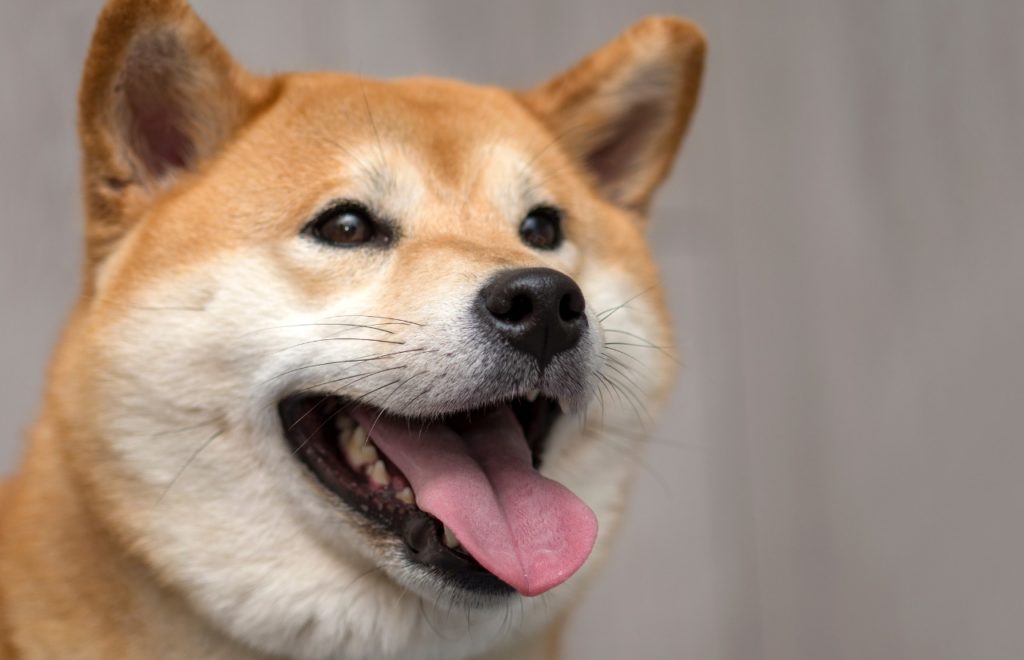
History and Origin
The Shiba Inu, one of the oldest native dogs of Japan, heralds from the mountainous regions of the country. Historically utilized for hunting in the steep, lush terrains, the Shiba possesses a keen sense of alertness and an agile, muscular build. Their history is both rich and, to some extent, mysterious, with much of it being lost during World War II. Despite this, the Shiba Inu has emerged not just as a beloved national treasure of Japan but also as a globally cherished breed, intertwining ancient allure with modern-day canine companionship.
Temperament and Personality
Endowed with a spirited boldness and an enchanting streak of naughtiness, the Shiba Inu is a small dog with a sizable personality. Their alert expressions are a window into a world of playful antics, clever problem-solving, and sometimes, a dash of stubborn independence. While they are incredibly loyal and affectionate with their families, Shiba Inus are known for their discerning nature, carefully choosing when to shower their affection and showcase their spirited playfulness.
Training and Socialization
Training a Shiba Inu invites you into a fascinating dance of wit, where your training sessions become a playground of intelligent exchange. Early, consistent training and socialization are vital to molding a well-behaved Shiba. Given their natural inclination towards independence and a minor streak of stubbornness, employing positive reinforcement techniques and ensuring varied social interactions from a young age is paramount.
Health and Care
With a lifespan of approximately 12-15 years, the Shiba Inu is generally a healthy breed. Nonetheless, being vigilant about potential health issues like hip dysplasia, allergies, and eye conditions, and ensuring regular veterinary check-ups, is essential for maintaining their vivacious spirit and wellbeing. A balanced diet, ample exercise, and mental stimulation remain pivotal in providing a nurturing environment for your Shiba.
Grooming Needs
Adorning a thick double coat that comes in various striking colors like red, sesame, and black and tan, Shiba Inus are relatively low-maintenance in terms of grooming. Their self-grooming habits, akin to those of a cat, and their minimal odor, make them exceptionally clean dogs. However, they do go through a semi-annual shedding season, during which their grooming needs escalate. Regular brushing during these periods and routine nail trims, ear, and dental check-ups are integral to their grooming regimen.
In closing, the Shiba Inu, with its fox-like appearance, spirited personality, and deep-rooted Japanese origins, offers a unique blend of historical richness and playful companionship. Their spirited antics, intelligent gaze, and compact, muscular form provide a heartwarming, lively, and undeniably enchanting canine companionship, captivating the hearts of those lucky enough to share their homes with this enchanting breed.
Having explored the cheeky charisma of the Shiba Inu, let’s delve into the quiet, steadfast world of the Kishu Ken, another gem among Japanese dog breeds.
Kishu Ken: The Silent Hunter
Embarking on a journey through the thickly forested regions of Japan, we encounter the Kishu Ken, a breed shrouded in a veil of quiet mystery and enigmatic charm. Renowned for their hunting prowess and stoic personality, the Kishu Ken brings forth a cascade of fascinating tales from the ancient Japanese landscapes. This breed, often perceived as a whisper amidst the cacophony of other breeds, offers a profound, silent, and remarkably deep connection to their human companions.
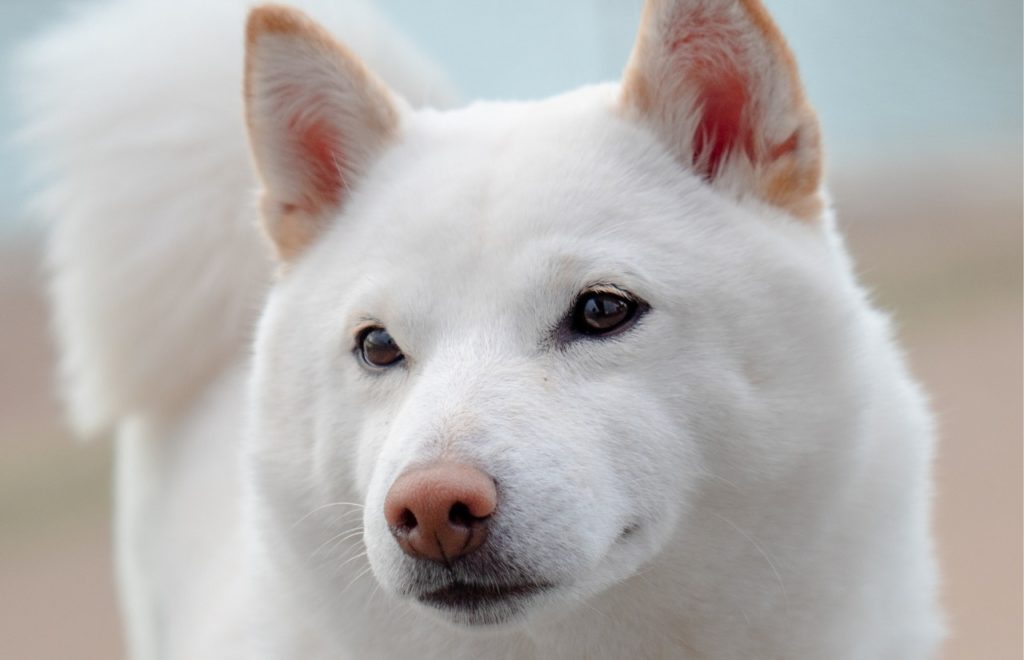
History and Origin
The Kishu Ken traces its roots back to the remote Kishu region in Japan, where it was renowned for hunting game through dense forests and rugged terrains. Their quiet, controlled demeanor and substantial strength were highly prized among hunters, particularly for hunting wild boar. With a history intimately intertwined with the rich, natural tapestry of the Japanese wilderness, the Kishu Ken has gracefully navigated through time, maintaining its instinctive hunting abilities and composed disposition.
Temperament and Personality
One cannot delve into the world of the Kishu Ken without being profoundly touched by their serene, almost poetic personality. Though naturally reserved and somewhat aloof towards strangers, the Kishu Ken forms a deep, unwavering bond with its family. Their loyalty is unspoken, manifested through gentle gestures, protective instincts, and a constant, comforting presence. The Kishu rarely barks, but when it does, rest assured, it is a sound anchored in significance.
Training and Socialization
When engaging in the art of training a Kishu Ken, patience, understanding, and a gentle firmness are pivotal. Their natural independence and calm self-assurance require a trainer who can navigate through their reserved personality with respect and consistent, positive enforcement. Socialization is equally critical – exposing them to varied environments, people, and experiences ensures that their natural caution does not morph into shyness or anxiety.
Health and Care
Wrapped in a mantle of robust health and vitality, the Kishu Ken generally enjoys a lifespan of 11-13 years. While they are sturdy and typically healthy, being attentive to potential genetic conditions like hip dysplasia and ensuring they have access to a balanced diet and regular exercise is paramount. Routine veterinary check-ups and being alert to any changes in their behavior or physical condition are essential in safeguarding their health.
Grooming Needs
The Kishu Ken’s short, dense coat and clean habits make them relatively low-maintenance from a grooming perspective. Regular brushing to remove loose hair and maintain the coat’s healthy sheen, especially during their seasonal sheds, is typically sufficient. Furthermore, adhering to a grooming routine that includes nail trimming, ear cleaning, and dental care will ensure that the Kishu Ken remains in optimal condition throughout their life.
In conclusion, the Kishu Ken, with its silent strength, enigmatic charm, and unspoken loyalty, invites us into a world where words are often unnecessary, and companionship is a quietly woven tapestry of shared glances and silent adventures. For those who find a friend in a Kishu Ken, life becomes a quietly unfolding journey, enriched by the subtle, yet profound connection shared with this remarkable breed.
From the silent woods of the Kishu Ken, we step into the agile, adventurous terrains traversed by the spirited Shikoku.
Shikoku: The Agile Adventurer
Amongst the dense, enigmatic forests of the Shikoku Island in Japan, emerges a breed that blends agile prowess with a wild, instinctual spirit: the Shikoku dog. With a history that dances through the rugged terrains and steep mountainous regions of Japan, the Shikoku is an embodiment of primitive allure and adventurous spirit, gracefully combining independence with a deeply ingrained loyalty. Delving into the world of the Shikoku, we find a vibrant, energetic companion who invites us to embark on a lifetime of adventures and exploration.
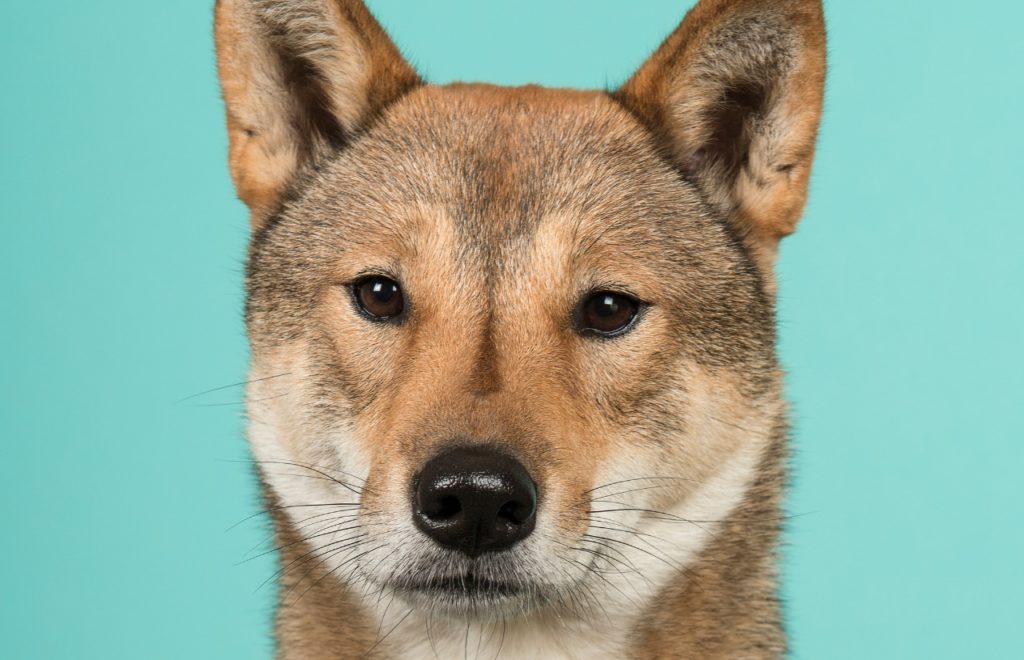
History and Origin
The Shikoku dog hails from the isolated, mountainous region of Shikoku Island, where it was bred to hunt wild game through the treacherous terrains. The geographical isolation of the island, combined with the dedicated breeding efforts of the natives, has preserved the breed’s unique characteristics and hunting abilities. With an ancestry richly soaked in the wilderness of the island, the Shikoku stands as a testament to survival, agility, and primitive beauty in the canine world.
Temperament and Personality
The Shikoku, with its keen senses and vibrant energy, cascades through life with an exuberant curiosity and a spirited disposition. While they forge deep bonds with their families, their independent nature and intrinsic hunting instincts infuse them with a spirited boldness and adventurous drive. This breed, while loyal, loving, and intelligent, also cherishes its moments of independence, often embarking on exploratory escapades within safe boundaries.
Training and Socialization
Training a Shikoku invites one into a realm where intellect meets independence, demanding a balanced approach that combines consistency with understanding. Given their intrinsic hunting instincts and independent streak, early socialization and training become paramount to shape their behavioral development positively. Ensuring varied interactions with different environments, beings, and situations from a young age helps to cultivate their adaptability and sociability.
Health and Care
The Shikoku, blessed with a sturdy constitution and robust health, typically enjoys a lifespan of 10-12 years. Though generally healthy, ensuring a life that is as adventurous and vibrant as their spirit involves being vigilant about potential health concerns like allergies and hip dysplasia. A diet that fuels their energetic lifestyle, regular veterinary visits, and ample mental and physical stimulation are fundamental to their wellbeing.
Grooming Needs
Adorned with a double coat that is both straight and harsh, the Shikoku presents a relatively simple grooming routine. Regular brushing to manage shedding and maintain the health and appearance of their coat, particularly during their biannual shedding periods, is essential. Incorporating routine nail trims, regular ear checks, and dental care into their grooming regimen ensures that they remain in stellar condition to embark on their next adventure.
Embracing the world of the Shikoku, we find ourselves immersed in a life where every day becomes an adventure, and every moment is infused with their spirited, lively presence. The Shikoku, with its wild spirit, intelligent gaze, and adventurous heart, not only becomes a beloved family member but also a fellow adventurer, exploring the tapestry of life alongside you with exuberant joy and spirited curiosity.
Leaving the lively trails of the Shikoku behind, we journey into the resilient, hearty world of the Hokkaido, exploring further the diverse landscapes of Japanese dog breeds.
Hokkaido: The Robust Survivor
Amidst the chilling whispers of the frosty winds and beneath the shimmering blanket of fresh snow in Japan’s northernmost reaches, thrives a breed both spectacularly resilient and beautifully rugged – the Hokkaido dog. Embodying the spirit of robust survival and endearing loyalty, the Hokkaido invites us into a world where the strength to endure the harshest conditions intertwines elegantly with a warm, affectionate heart. Embarking on a journey through the world of the Hokkaido, we discover a companion who brings steadfast loyalty, striking aesthetics, and a resilient spirit into our lives.
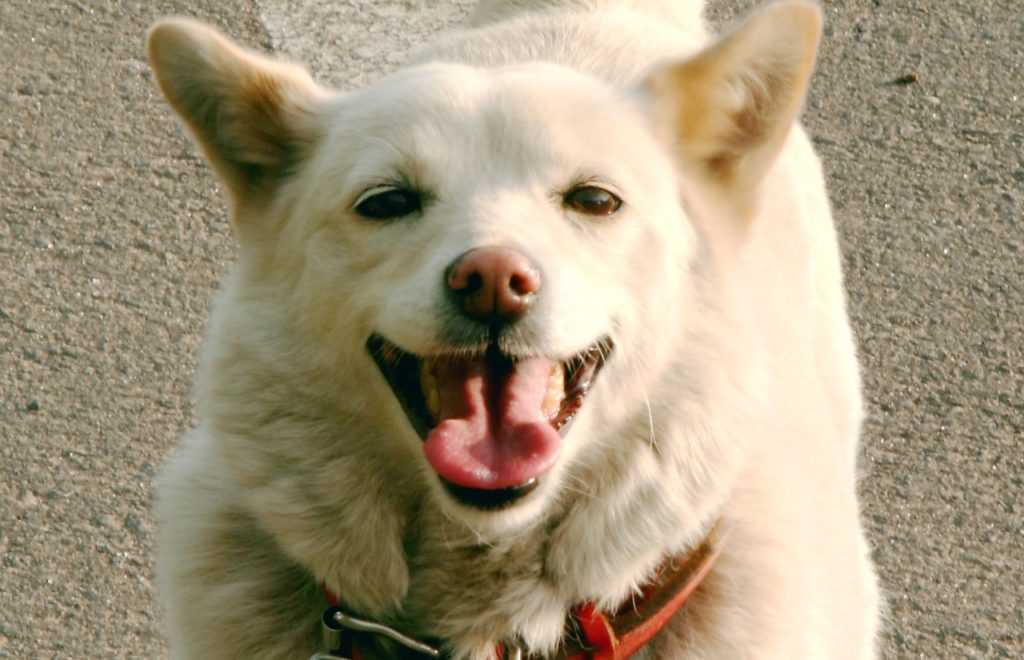
History and Origin
The noble Hokkaido, also known as Ainu-ken, traces its paw prints back to the wintry landscapes of the Hokkaido region, where it was revered and employed by the Ainu people for hunting and guarding. With a historical tapestry that is brilliantly woven with tales of survival in the harsh, frigid conditions of northern Japan, the Hokkaido has evolved into a breed that embodies spectacular resilience, formidable strength, and an instinctive, primal intelligence.
Temperament and Personality
Beneath the sturdy exterior of the Hokkaido lies a heart that beats with unwavering loyalty, gentle affection, and a calm, measured demeanor. Though they display a natural wariness towards strangers and a palpable protective instinct towards their family, their interactions are typically characterized by calmness and measured assessment rather than impulsivity. The Hokkaido, with its gentle eyes and sturdy stance, offers a companionship that is steadfast, serene, and deeply bonded.
Training and Socialization
The primitive instincts and independent spirit of the Hokkaido demand a training approach that is both respectfully assertive and insightfully adaptive. Navigating through their intelligent, discerning minds requires consistency, positive reinforcement, and a deep understanding of their intrinsic traits and needs. Early socialization, exposing them to a mosaic of experiences, beings, and environments, is critical in nurturing a Hokkaido that is balanced, confident, and sociable.
Health and Care
Blessed with a remarkable resilience and a generally robust constitution, the Hokkaido often enjoys a healthy lifespan of 12-15 years. However, tending to their well-being involves being mindful of breed-specific concerns like hip dysplasia and ensuring they maintain a healthy weight to mitigate potential joint issues. A nutritious diet, regular exercise, and attentive healthcare are vital in preserving their vitality and robust health.
Grooming Needs
The Hokkaido’s double coat, designed by nature to provide insulation against the bitter cold, demands regular grooming to maintain its health and functionality. Frequent brushing to manage shedding and prevent matting, particularly during their seasonal sheds, is essential. Routine care, such as nail trimming, ear cleaning, and dental maintenance, also plays a pivotal role in ensuring that the Hokkaido is always in its best possible form.
The Hokkaido, through its striking presence, resilient spirit, and gentle, loyal heart, introduces us to a companionship that is as deeply profound as the ancient, snowy landscapes from which it hails. Engaging with the world alongside a Hokkaido, we find a path that is silently guarded by their protective instincts, warmly illuminated by their loyal companionship, and steadfastly traversed with their robust survival spirit.
From the robust wilderness inhabited by the Hokkaido, our journey through Japanese dog breeds takes us to the regal, playful world of the Japanese Chin.
Japanese Chin: The Aristocratic Companion
Embarking on a journey into the luxurious and refined world of the Japanese Chin, we are graciously ushered into an era where royalty, elegance, and spirited charm coalesce into a breed that is as enchanting as it is dignified. The Japanese Chin, with its distinctive, aristocratic demeanor and playful, loving spirit, introduces us to a companionship that is both regal and warmly affectionate, elegantly intertwining the sophistication of ancient nobility with a delightful, spirited presence.
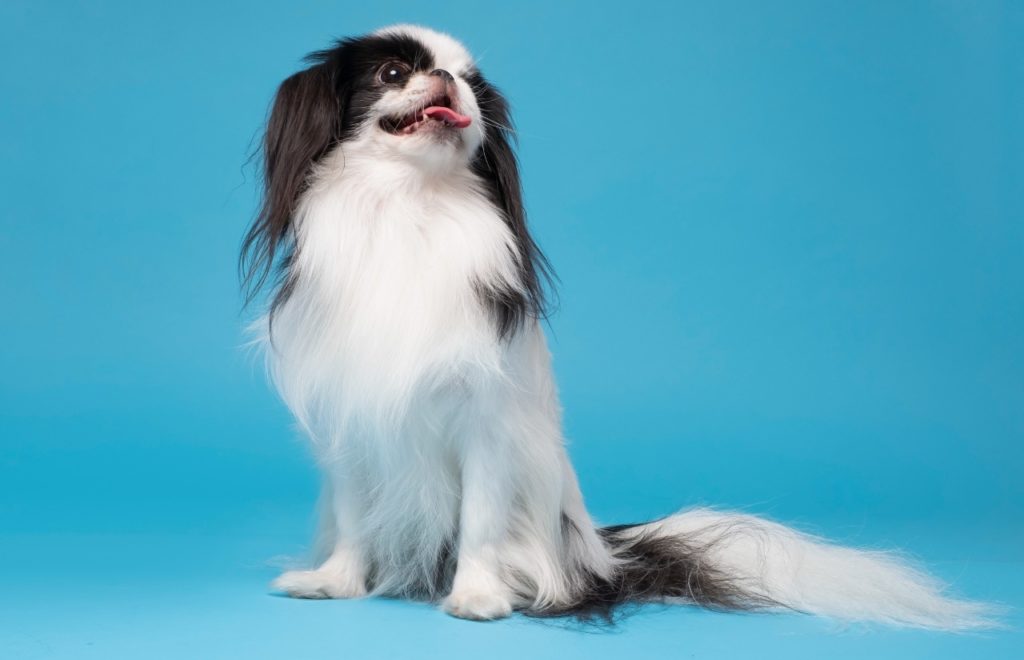
History and Origin
Adored by Japanese nobility and often shrouded in delightful tales of imperial legacy, the Japanese Chin traces its origins back to the aristocratic lap of ancient Japan, where it was revered and cherished as a luxurious companion and a symbol of royal elegance. Whether nestled amidst the rich tapestries of ancient Japanese courts or gracefully parading through imperial gardens, the Japanese Chin has always been synonymous with refinement, sophistication, and aristocratic charm.
Temperament and Personality
With eyes that sparkle with mischievous curiosity and a demeanor that radiates serene sophistication, the Japanese Chin enchants with a personality that is both exuberantly playful and elegantly composed. While they bask in the glow of their family’s love and affection, their interactions are typically characterized by a gentle, loving playfulness intertwined with moments of contemplative serenity and independent exploration.
Training and Socialization
Delving into the training and socialization world of the Japanese Chin demands an approach that is gently assertive and richly rewarding. Their intelligent, sometimes willful, disposition necessitates a balanced blend of consistent, positive reinforcement training and gentle, respectful guidance. Early, varied socialization, introducing them to an array of experiences and beings, is essential in nurturing a well-rounded, sociable, and confident Chin.
Health and Care
The Japanese Chin, often blessed with good health and a robust little constitution, typically enjoys a lifespan of 10-12 years. However, attentive care towards potential breed-specific concerns like heart issues and ensuring a lifestyle that is balanced with appropriate exercise, diet, and regular veterinary check-ups is pivotal in ensuring their vitality and longevity.
Grooming Needs
Adorned with a luxuriously silky, abundant coat, the Japanese Chin’s grooming routine is a delightful ritual that ensures their coat remains as splendid and elegant as their imperial legacy. Regular brushing to prevent matting and maintain the lustrous sheen of their coat, along with routine care such as nail trimming, ear cleaning, and dental health maintenance, ensures that they remain in impeccable condition, ready to grace any setting with their aristocratic charm.
In the graceful presence of the Japanese Chin, we find a world where playful spirit dances elegantly with aristocratic charm, where loving companionship is offered with a gentle, dignified grace, and where every moment is enriched with their enchanting, spirited presence. The Chin, with its imperial legacy, delightful charm, and loving heart, offers a companionship that is as warmly affectionate as it is regally enchanting.
Moving from the aristocratic demeanor of the Japanese Chin, let’s explore the harmonious, protective realms inhabited by the Sanshu Inu.
Sanshu Inu: The Harmonious Guardian
The Sanshu Inu, a breed that splendidly balances an alert, protective demeanor with a gentle, affable spirit, introduces us to a world where the harmonious unity of contrasting qualities creates a companion that is both a vigilant guardian and a tender friend. Journeying through the world of the Sanshu Inu, we discover a breed that entwines the robustness of a protector with the warmth of a family companion, embodying a balanced, harmonious relationship that has been cherished across generations.
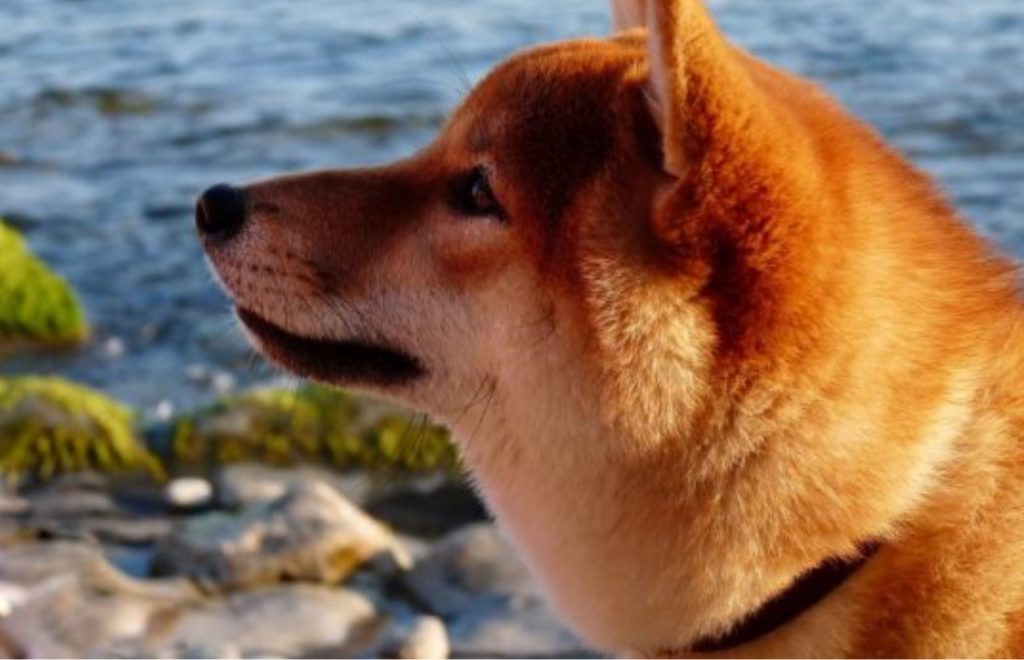
History and Origin
Originating from Japan, the Sanshu Inu traces its roots to the early 20th century when it was developed by crossing Japanese breeds with Chinese and European dogs. Crafted amidst the scenic landscapes of Japan, the Sanshu Inu emerged as a breed that adeptly balances a sturdy, robust constitution with an innately gentle, affable nature. From its initial role in hunting and guarding, it has seamlessly transitioned into a beloved family companion, admired and cherished across the globe.
Temperament and Personality
The Sanshu Inu, with its expressive eyes and calm, balanced demeanor, envelops its family in a protective, yet gentle embrace. While their vigilant, alert nature establishes them as formidable guardians, their inherent gentleness and affectionate spirit create a deeply bonded, loving companionship. The Sanshu, through its harmonious blend of strength and tenderness, offers a relationship that is as reassuringly secure as it is warmly affectionate.
Training and Socialization
Navigating through the training journey of a Sanshu Inu requires an approach that honors its intelligent, sometimes independent spirit with respect, consistency, and positive reinforcement. Creating an environment that nurtures their learning, while also exposing them to a myriad of experiences, beings, and environments through early, comprehensive socialization, is essential in cultivating a Sanshu that is well-adjusted, confident, and sociable.
Health and Care
Embodying robust health and a sturdy constitution, the Sanshu Inu often enjoys a lifespan of 12-15 years. A commitment to ensuring their well-being involves mindful attention towards a balanced diet, regular exercise, and preventive healthcare, ensuring their vitality and wellness throughout their life. A commitment to their comprehensive health not only ensures their physical vitality but also enriches the quality of the companionship they offer.
Grooming Needs
Adorned with a dense, short coat, the Sanshu Inu’s grooming requirements, while not exceedingly demanding, necessitate regular attention to ensure optimal coat health and overall well-being. Regular brushing to manage shedding and prevent any potential skin issues, along with routine care including nail trimming, ear cleaning, and dental care, ensures that the Sanshu is always in its best form, ready to embark on adventures, whether in guarding or companionship.
The Sanshu Inu, through its balanced, harmonious blend of protective vigor and gentle affection, introduces us to a companionship that is as steadfastly secure as it is heartwarmingly tender. In the presence of a Sanshu, we find a friend who guards with unwavering vigilance and loves with an open, gentle heart, enriching our worlds with their harmonious, protective embrace.
Our exploration of the Sanshu Inu concludes our journey, leaving us with a rich tapestry of tales and characteristics from beloved Japanese dog breeds.
Closing Thoughts
In weaving through the varied tapestry that encompasses the distinctive and beloved canine breeds originating from Japan, one can’t help but be enchanted by the depth, history, and diverse personalities that arise from this culturally rich island nation. From the dignified and steadfast Akita Inu to the spirited and elegant Japanese Chin, these breeds not only stand as testament to Japan’s rich historical and cultural landscape but also, seamlessly entwine themselves into the hearts of dog lovers around the globe.
A Celebration of Diversity
The exploration of these breeds brings to the fore a remarkable diversity, reflecting not just the varied landscapes from which they hail but also the multifaceted relationships that they offer to their human companions. Each breed, with its unique personality, requirements, and intrinsic qualities, caters to a spectrum of canine appreciators, ensuring that every dog lover can find a companion that resonates with their lifestyle, preferences, and spirit.
Understanding and Respect
Embarking on a journey with any of these splendid breeds requires not only an understanding of their unique needs and inherent characteristics but also a profound respect for the rich history and primal instincts that continue to course through their veins. Being a guardian to these remarkable creatures is not merely a responsibility but an honor that demands empathy, commitment, and a willingness to delve deeply into their worlds, ensuring a companionship that is mutually enriching and respectful.
Commitment to Welfare
It’s imperative, as admirers and potential guardians of these breeds, to extend our exploration beyond the allure of their physical appearance and celebrated traits, and commit to ensuring their wellbeing, happiness, and preservation. From responsible breeding practices that safeguard their health and perpetuation, to providing environments that honor their intrinsic needs and qualities, our engagement with these breeds should always be guided by a commitment to their comprehensive welfare and happiness.
In closing, the worlds of the Akita, Shiba Inu, Kishu Ken, Shikoku, Hokkaido, and Japanese Chin invite us into landscapes that are as varied, profound, and enchanting as the breeds themselves. Whether we find ourselves amidst the snowy terrains of Hokkaido, the rugged landscapes of Shikoku, or the imperial courts of ancient Japan, these breeds offer not merely companionship but a journey; one that is enriched with history, diversity, and a deeply embedded, timeless love. Here’s to celebrating them, understanding them, and ensuring their continued legacy and wellbeing in our modern world.

